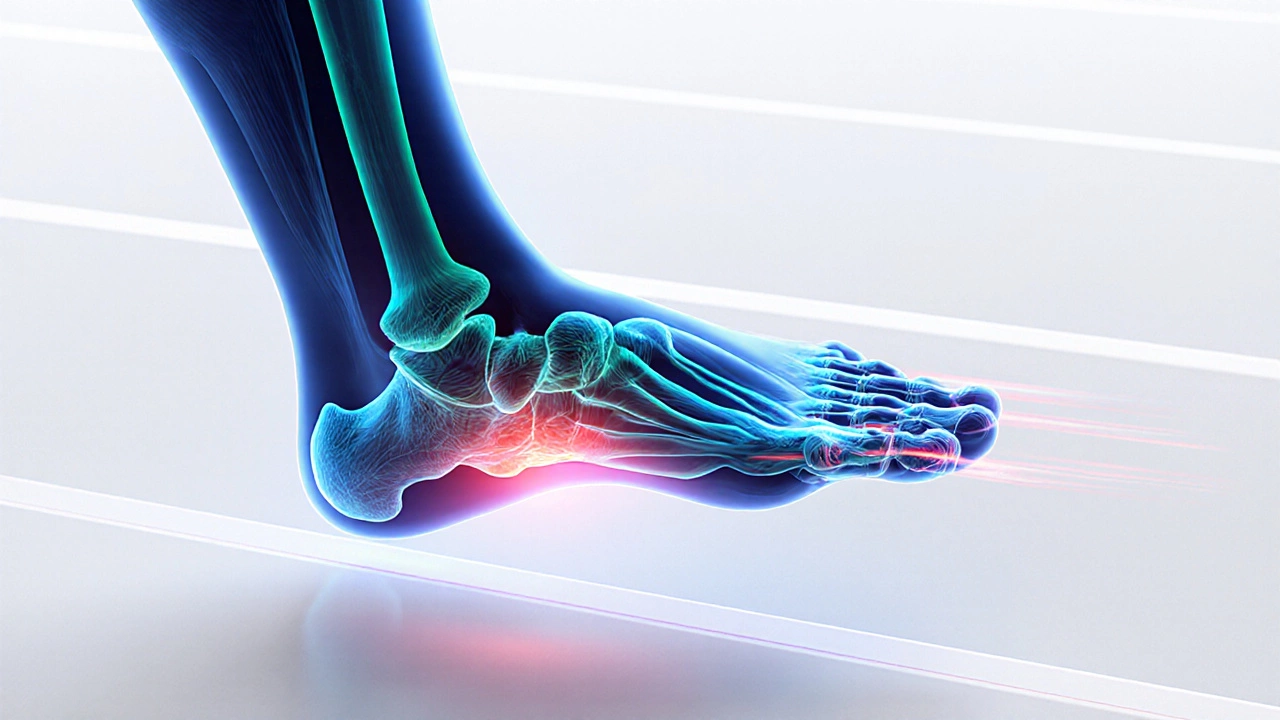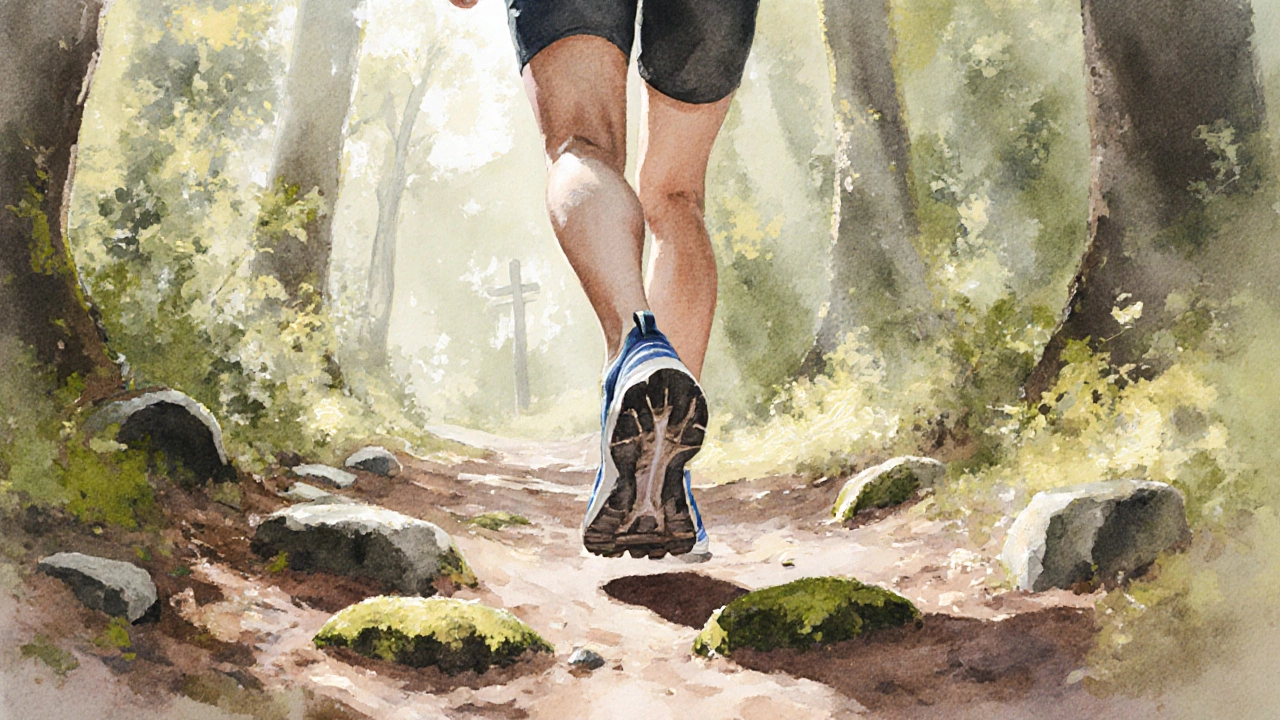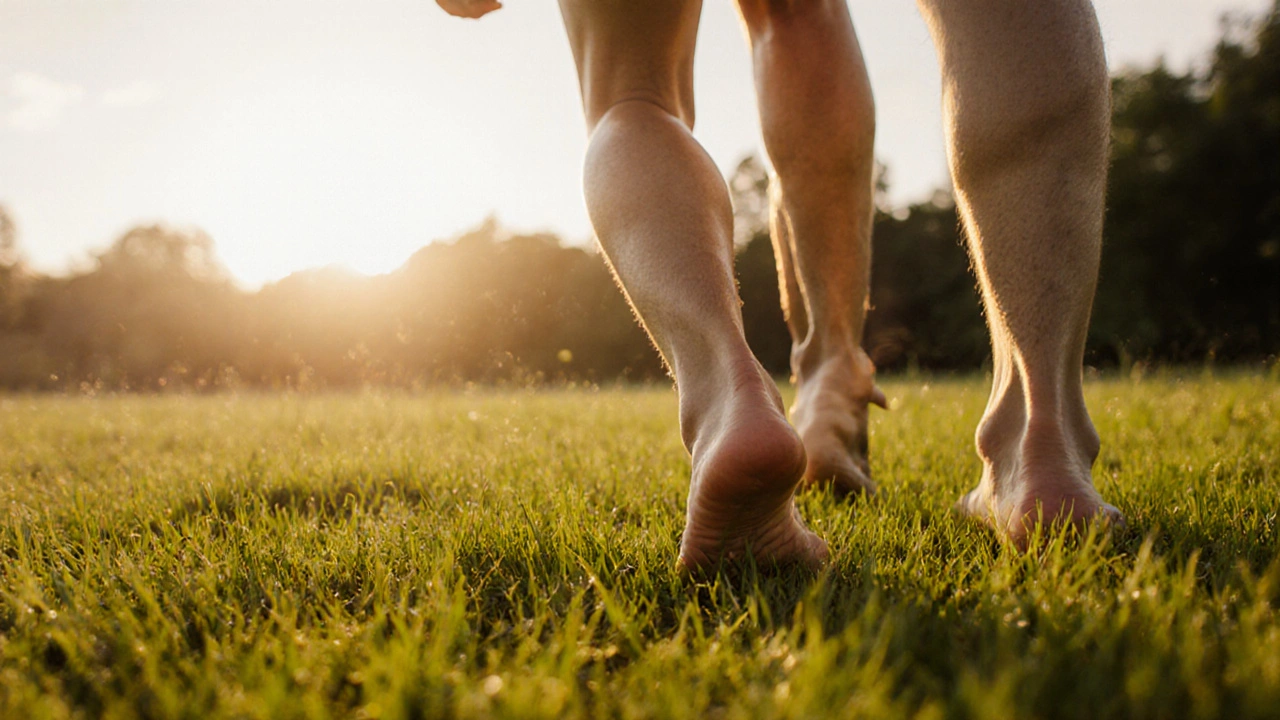Cadence Calculator
Running Cadence Calculator
The ideal cadence for barefoot running is typically 170-180 steps per minute. This tool helps you calculate your current cadence and determine how close you are to the recommended range.
Ever wondered if you should ditch the cushy sneaker and go barefoot running? The short answer is: it can be great, but only if you know what you’re getting into. Below we unpack the science, lay out the pros and cons, and give you a step‑by‑step plan to try it without blowing up your legs.
Key Takeaways
- Barefoot running strengthens foot muscles and can improve running efficiency.
- It also raises the risk of specific injuries like metatarsal stress and plantar‑fascia strain if you transition too fast.
- Successful adoption hinges on a gradual mileage increase, higher cadence, and proper surface choice.
- Minimalist shoes act as a bridge, offering protection while preserving a natural foot strike.
- Listen to your body - pain is a sign to back off and adjust your plan.
What is Barefoot Running?
Barefoot running is a style of running where the foot lands on the ground with little or no cushioning, mimicking the way humans moved before modern shoes existed. It emphasizes a forefoot or midfoot strike, which lets the toes and the arch absorb shock naturally. By contrast, traditional running typically involves a heel‑first landing cushioned by thick midsoles. The shift in landing pattern changes the forces that travel up the leg, affecting muscles, tendons, and bones.
Why Some Runners Swear by It
Scientists have measured several benefits when runners adopt a more natural foot strike:
- Improved muscle activation: The calf muscles work harder, which can increase ankle stability and power output.
- Reduced impact forces: Landing on the forefoot shortens the vertical oscillation, lowering the peak impact that the knee and hip experience.
- Better proprioception: Feeling the ground directly helps runners fine‑tune their stride, often resulting in a higher cadence (steps per minute).
- Potential injury prevention: Some studies show a lower incidence of repetitive‑stress injuries such as iliotibial band syndrome when runners switch to a more natural gait.
These gains don’t happen overnight, but they explain why many elite athletes incorporate barefoot or minimalist sessions into their training.

Risks You Can’t Ignore
Going barefoot isn’t a free pass to better performance. The body must adapt, and that transition period can bring specific problems:
- Plantar fascia strains are common if the arch is suddenly overloaded.
- Metatarsal stress fractures can develop from the increased load on the ball of the foot.
- Achilles tendonitis may flare up when the tendon is forced to handle more eccentric loading.
- Running on hard, uneven surfaces without protection raises the chance of cuts, bruises, or stone‑related injuries.
The key is to treat barefoot running as a new training stimulus, not a cure‑all. Gradual exposure is the only way to keep these risks in check.
How to Transition Safely
Think of the transition like learning a new language - you start with short, simple phrases before tackling complex sentences. Follow these five steps and you’ll give your body the time it needs to adapt:
- Start on soft surfaces. Begin on grass, a well‑maintained track, or a treadmill with a low‑incline. Soft ground reduces impact while you learn the new foot strike.
- Limit the first sessions. Aim for 5-10 minutes of barefoot or minimalist running per workout, three times a week. Keep total weekly mileage under 10% of your regular load.
- Prioritize cadence. Shoot for 170-180 steps per minute. Higher cadence shortens stride length, which naturally encourages a forefoot landing.
- Strengthen the foot. Add daily foot‑strengthening drills: towel scrunches, marble pickups, and heel‑toe walks. This builds the foot arch and surrounding muscles.
- Progress slowly. Increase barefoot time by no more than 10% each week. If you feel soreness beyond mild muscle fatigue, step back and repeat the previous week’s volume.
Listen to the feedback your body gives you. A slight ache in the forefoot after a new session is normal, but sharp, stabbing pain means you need to pause.
Minimalist Shoes: The Middle Ground
If the idea of full barefoot feels intimidating, minimalist shoes provide a compromise. These shoes retain a thin sole (usually under 5mm) and a wide toe box, giving you protection from debris while allowing a natural foot strike.
Key features to look for:
- Zero-drop platform - the heel and forefoot sit at the same height.
- Flexible outsole that bends at the forefoot.
- Wide toe box to let the toes splay.
Brands such as Vibram FiveFingers, Merrell Trail Glove, and Xero Shoes dominate the market in 2025. When shopping, check the outsole thickness and look for user reviews that mention durability on pavement.

When Barefoot Running Makes Sense
Not every run should be barefoot. Here’s a quick guide to help you decide:
| Scenario | Best Choice | Why? |
|---|---|---|
| Short, easy runs on grass or track | Barefoot or minimalist | Soft surface reduces impact while you practice foot strike. |
| Long distance runs (10+km) on pavement | Traditional shoes | Higher cumulative impact; cushioning helps protect joints. |
| Trail runs with rocks and roots | Minimalist shoes with protective toe caps | Provides foot protection without sacrificing natural movement. |
| Speed work or interval training | Minimalist shoes | Allows quick turnover while still shielding the foot. |
| Recovery jogs on concrete | Traditional shoes | Extra cushioning eases stress on sore muscles. |
Use this matrix as a decision‑making tool. If you’re still unsure, start with a hybrid approach: Run weekly on a treadmill in minimalist shoes, keep road miles in a well‑cushioned trainer.
Common Myths Debunked
There’s a lot of hype around barefoot running, so let’s separate fact from fiction:
- Myth: Barefoot running eliminates all injuries.
Truth: It merely shifts the injury pattern; you can still get hurt if you ignore proper form. - Myth: You must run completely barefoot to see benefits.
Truth: Minimalist shoes deliver most of the biomechanical gains while offering safety. - Myth: All runners can transition quickly.
Truth: Genetics, foot structure, and training history dictate how fast you adapt.
Understanding the reality helps you set realistic expectations and stay motivated.
Bottom Line
If you approach barefoot or minimalist running with a measured plan, you’ll likely see stronger feet, a smoother stride, and a fresh sense of connection to the ground. The trick is respecting the body’s adaptation timeline, choosing the right surfaces, and using the right shoes as a bridge.
Frequently Asked Questions
Does barefoot running improve speed?
Often, yes. A higher cadence and more efficient foot strike can reduce ground contact time, which translates to faster paces, especially in short sprints or interval workouts.
How long does it take to adapt?
Adaptation varies. Most runners notice noticeable changes after 4-6 weeks of consistent, low‑volume barefoot work, but full muscular adaptation can take 3-6 months.
Can I do barefoot running on pavement?
Occasionally, but keep the distance short. The hard surface increases impact forces, so limit pavement sessions to a few minutes unless you’re wearing protective minimalist shoes.
What’s the best cadence for barefoot running?
Aim for 170-180 steps per minute. This range encourages a mid‑foot strike and reduces the braking force that can lead to injury.
Should I strengthen my feet before starting?
Yes. Simple daily drills-like toe curls, short‑distance barefoot walks, and balance exercises-prepare the foot arch and surrounding muscles for the new load.
